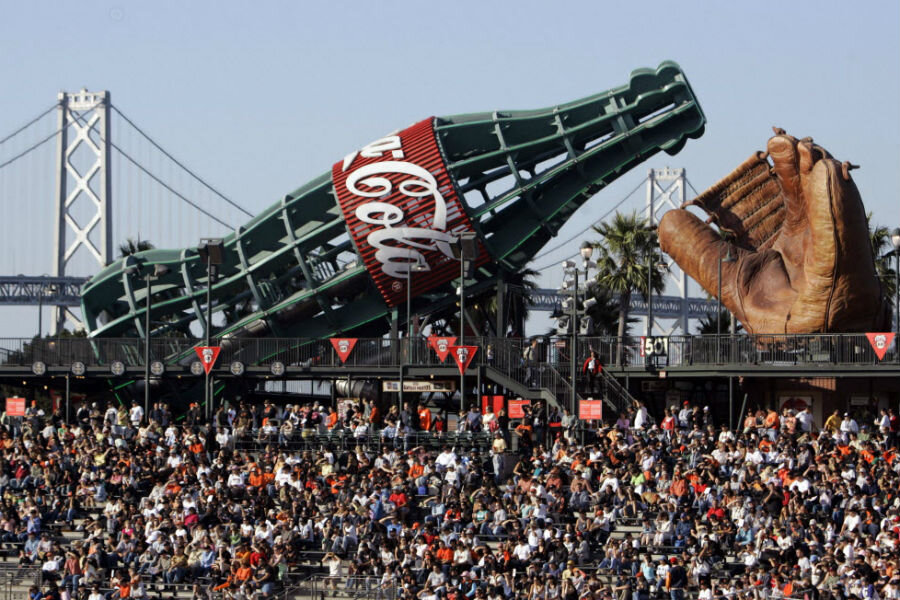Four more US cities pass soda taxes: How effective are they?
Loading...
Voters in the Californian cities of San Francisco, Oakland, and Albany, as well as in Boulder, Colo., voted to implement soda taxes on Tuesday, potentially becoming a harbinger for similar actions around the country.
The three California cities approved a penny-per-ounce tax on non-alcoholic beverages with caloric sweeteners, while Boulder went for a two-cents-per-ounce tax. In California, it was one of the most expensive ballot battles, pitting billionaires such as Michael Bloomberg against deep-pocketed beverage companies.
Cutting calories by targeting sugar-added drinks has increasingly been seen as a tool to tackle obesity in the United States, where more than 2 in 3 adults are considered to be overweight or obese. The solution was also touted by the World Health Organization last month. Multiple cities have flirted – and in some cases, failed – with implementing the tax, and Cook County in Illinois is set to vote on the issue on Thursday. But research from places with soda taxes in place shows mixed results that indicate it is too early to tell whether the strategy is truly effective.
"We respect the decision of voters in these cities. Our energy remains squarely focused on reducing the sugar consumed from beverages – engaging with prominent public health and community organizations to change behavior," the American Beverage Association said on Wednesday, as reported by The Wall Street Journal.
Beverage companies, such as Coca-Cola and PepsiCo, are already reducing sugars and calories in response to an increasingly health-conscious American population. In fact, sales of carbonated soft drinks in the American market have been declining for the past decade, with many consumers switching to bottled water.
Health advocates who support the tax often point toward Mexico, which implemented a soda tax in 2014, as a success story. As Food Tank previously reported, Mexico has the highest rate of overweight and obese adults in the world – as well as the highest per capita consumption of soda. Researchers from the University of North Carolina at Chapel Hill and the Mexican National Institute of Public Health found a 12 percent decrease in the sale of sugary beverages by December 2014, with lower socioeconomic groups showing the biggest decrease.
As for the United States, cities such as New York and San Francisco saw failures in passing a soda tax in previous years. Berkeley, Calif., and Philadelphia are two recent successes.
While Berkeley’s taxes only went into effect in January 2015, research by professors at the University of California, Berkeley, contends that residents are drinking 21 percent fewer soda and sugar-sweetened beverages and 62 percent more water.
"We are looking for tools that support people in making healthy choices, and the soda tax appears to be an effective tool," study senior author Kristine Madsen, an associate professor of public health at UC Berkeley, told Berkeley News.
Philadelphia will begin levying the tax in January 2017.
The caveat to those results is that the tax has to be high enough that it would be passed along to consumers in higher prices. To achieve the goal of tackling obesity, consumers also must not merely switch soda for another source of calories. As Margot Sanger-Katz at The New York Times wrote last year, the American Beverage Association has often used that excuse to argue that obesity won’t decline by implementing soda taxes.
"They just found that folks would just find other ways to get the products or nutrients they wanted," said William Dermody, a spokesman for the association, regarding studies that found soda taxes in Europe and United States don't work. "Taxes and bans and restrictions don't change the behaviors that lead to obesity."
Ms. Sanger-Katz points out that the study Mr. Dermody cites examines taxes that are too small or are passed along as sales taxes, thus escaping the notice of consumers. But she concedes that finding out whether soda taxes really contribute to a long-term decline in obesity will require research over a longer timeframe.
Now, researchers may have more data to pick from with the addition of the four new cities and potentially Chicago's Cook County.






